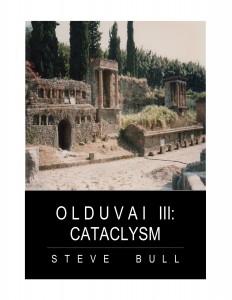Home » Posts tagged 'viral pandemic' (Page 3)
Tag Archives: viral pandemic
Redesigning the World – The Great Reset
Redesigning the World – The Great Reset COMMENT: Melbourne is getting locked down again. 5 million people on lockdown for 6 weeks at least! People will only be allowed to leave home to go to work (if they can’t work online), grocery shopping, or for medical reasons.All because of 191 alleged virus cases. Catalunya is now […]
What Happens If Most Businesses & Consumers Tighten Their Belts at the Same Time?
What Happens If Most Businesses & Consumers Tighten Their Belts at the Same Time? Europe may be about to find out. 128 days with my Mother-in-Law. As market players cling to the hope that a V-shaped economic recovery is still possible in Europe, to match the central-bank engineered rebounds of benchmark indexes such as Germany’s DAX […]
Rabobank: “We Live In A Pretty Crazy World Right Now”
Rabobank: “We Live In A Pretty Crazy World Right Now” Crazy World I think we can all agree that we live in a pretty crazy world right now: and that’s an appropriate title for the Daily today too, for reasons that will be explained shortly. It’s a world where we are seeing staggering increases in […]
A Serious Message From Chris Martenson
A Serious Message From Chris Martenson Time is running short to brace for impact Like a windstorm toppling a hollowed-out tree, SARS-CoV-2 didn’t cause the current recession so much as it exposed how rotten things already were. Even before SARS-CoV-2, households were struggling. Far too many were limping along without any savings at all, one […]
The Groupthink Pandemic
The Groupthink Pandemic Groupthink is all around us. Decision-making in government, in the media and at work. It’s slowly killing the world. In the background of the most important events, the Covid-19 response and increasing tension and conflict in the world, it might be worth looking through some of this in a bit more detail. […]
Food sovereignty now and beyond COVID-19
Food sovereignty now and beyond COVID-19 COVID-19 has changed daily realities in nearly every corner of the world. But for millions of people, fears about access to food have made the crisis even worse. Recently the UN warned of disruption to food supplies and further loss of incomes and livelihoods – up to 1.6 billion workers affected in the […]
Our conversation with a coronavirus
Our conversation with a coronavirus We have all been flummoxed by the way in which the coronavirus called COVID-19 has behaved as if it has agency in the world. We say it “moves,” “adapts,” “evades,” and “tricks us.” We attribute an intelligence to it. We marvel at its ability to manifest itself in so many ways. […]
Is America Heading For Civil War? Of Course It Is…
Is America Heading For Civil War? Of Course It Is… In last week’s article I discussed the issue of American “balkanization” and the rapid migration of conservatives and moderates from large population centers and states that are becoming militant in their progressive ideology. In my home state of Montana there has been a surge of […]
The epidemic in the US: a comment by the virologist Guido Silvestri
The epidemic in the US: a comment by the virologist Guido Silvestri Many have noted the spike in the number of coronavirus cases observed in the United States. The fear is, obviously, that this increase will result in a corresponding spike in the number of deaths after some delay. The virologist Guido Silvestri wrote a comment in […]
9 Things to Buy Every Time You Go to the Store
9 Things to Buy Every Time You Go to the Store Lots of folks have mentioned that their grocery stores never fully restocked after the rush on food and supplies back at the beginning of the COVID-19 lockdown. And with the current news stories about spiking COVID numbers, it may not be long until we’re locked down again. Work […]
Blain’s Morning Porridge – June 29 2020: What if it’s just begun?
Blain’s Morning Porridge – June 29 2020: What if it’s just begun? What if the real pain is still to come? “That about sums it up for me..” There is an amusing piece on the FTs’ Alphaville listing 20 things investors should look for when trying to work out who will be the next Wirecard. You […]
COVID-19 and the economy: Where do we go from here?
COVID-19 and the economy: Where do we go from here? The COVID-19 story keeps developing. At first, everyone listened to epidemiologists telling us that a great deal of social distancing, and even the closing down of economies, would be helpful. After trying these things, we ended up with a huge number of people out of work […]
Market Begins To Internalize Reality
Market Begins To Internalize Reality Summary The financial media is beginning assign blame to the recent stock market weakness to the spike in COVID cases and the potential for a November Democratic sweep of the White House and both chambers of Congress Nothing new to GMM as we have been on this early and stood alone […]



